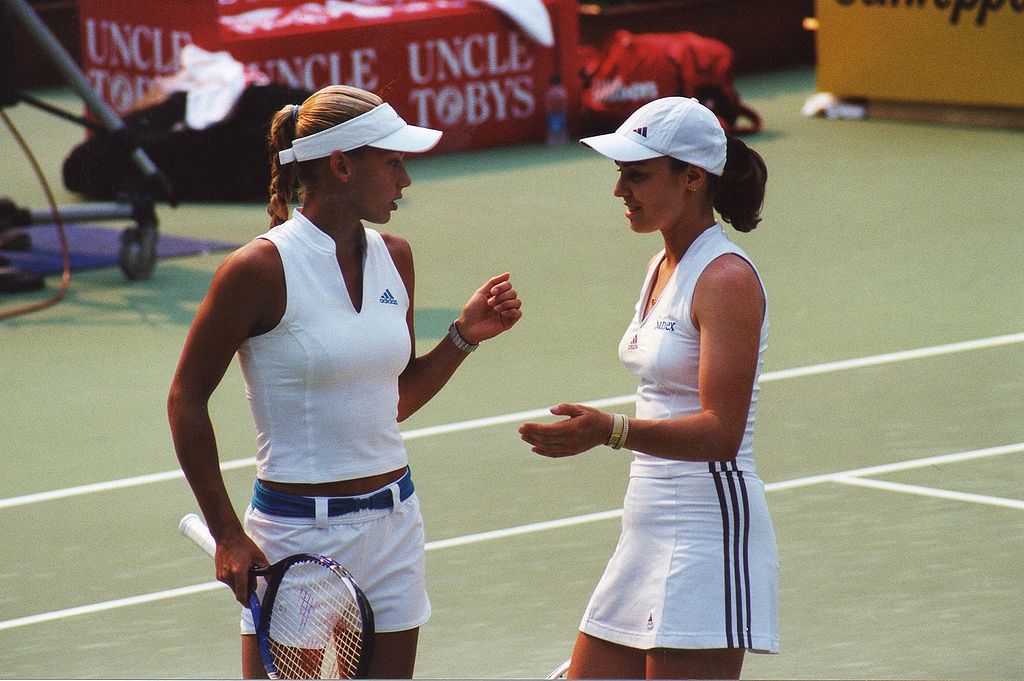TATA, MEHERBAI (nee Meherbai Bhabha)
India
Born 10 October 1879 in Bombay, India
Died 18 June 1931 in Wales, Great Britain
Married Sir Dorabji “Dorab” Tata (1859-1932) on 14 Febuary, 1898
Name variant: known most often as Lady Tata.
Nickname: 'Mehri"
[Active circa 1918-30]
Meherbai Tata notably enjoyed some success at the Western India Championships in Bombay in the 1920s. After her husband was knighted she was styled as Lady Tata.
She was a member of the Indian team at the 1924 Olympics, which was sponsored by the Tata family. Lady Tata defaulted her matches, making N. Polley the first Indian female to represent her nation at the Olympic Games. While the ITF and 1924 Olympics tennis fixtures have given the Saleem-Tata pair a first round bye, the mixed doubles entry list gives a ‘N. part’ (no partner) against her name. The Hindu’s 1924 July 17 edition, also has a mention of it, saying…In the third round of mixed doubles, Flaquer and Lili Alvarez walked over Saleem and Lady Tata (India) scratched.
Did Tata pull out to allow Mohd Saleem to concentrate on his singles? Or was she unwell? Did the organizers stop her because she wanted to play in a saree? Was she around for the first round?
From
Untitled Document (includes photo):
"Lady Meherbai Tata has a prominent and a unique place among the pioneers of the women’s movement in India. She was born on October 10, 1879 in Bombay. In the words of Stanley Reed, former Editor of the
Times of India; 'Meherbai was of medium height. Of regular feature, clear cut, and clear-eyed, with that flush through the faintly tinted live skin which painter tell us is the perfect complexion, she was the most striking figure even in the great gathering of Bombay society. She was well endowed with brains, learned and accomplished. She was devoted to all outdoor games; a proficient tennis player, she was equally at home in all forms of exercise.'
"In 1890, Jamsetji Tata went to Bangalore at the invitation of the Dewan of Mysore, Sir Seshadri Iyer, to assist him in his scheme for the establishment of a research institute. It is on one of these visits that he came in close contact with the Bhabha family. H. J. Bhabha was then the Inspector-General of Education, Mysore State. Jamsetji seems to have had a hand in the selection of Meherbai Bhabha as his daughter-in-law. The beautiful Meherbai married Dorabji Tata – the elder son of the Founder, Jamsetji Tata on February 14, 1898.
"She played in several tennis tournaments and won over sixty prizes. She shared Dorabji’s love of sport and won the Triple Crown in the Western India Tennis Tournament. Together they scored many successes in the All-India Championships. Lady Tata always wearing, as foreign reports phrased it, ‘Eastern dress’ – ‘the Saree’ – not the easiest of garments in which to play a winning game on the courts! She was a good rider and drove her own motor car.
"Many a woman in such circumstances would have been content to be a great society lady but Lady Tata however was made of different stuff. She was ever urging to utilise her opportunities to promote the education and well-being of her Indian sisters. She was one of the founders, first of the Bombay Presidency Women’s Council and then of the National Council of Women. She was consulted on the Sarda Act designed to outlaw child marriage. She campaigned for the higher education for women against the purdah system and the practice of untouchability.
"With regard to women’s education, she got full support from her husband Sir Dorabji Tata who encouraged her to take over the local school with the object of developing it into a model school. They brought an expert from England to survey the whole field of girls education in India. This survey took over a year and the book in which it took form was for many years the vade mecum which the Board of Education in Whitehall placed in the hands of all women inspectors or teachers proceeding to India, to take up higher education of girls.
"Her address at Battle Creek College, USA is her first considered pronouncement of the Indian situation as a whole. She gave her American audience an excellent bird’s-eye view of the history, the art, the religions and the races of India, the Indian States and their rulers, and touched upon the condition of women, their ignorance and the customs, which stood in the way of their development.
"Meherbai took a very active part during the War in raising contributions. She was also an active member of the Indian Red Cross Society, which she helped generously. In 1919, her services to the war efforts and women were recognised when she was created a Commander of the British Empire and received it at the hands of King George V.
"Lady Tata passed away on June 18, 1931. In April 1932, as a memorial to his wife, the Lady Tata Memorial Trust was set up for research into leukaemia. A much smaller trust, partly from public donations, the Lady Meherbai D. Tata Education Trust, for the training of women in hygiene, health and social welfare was also set up."
Sources:
Lady Tata, a book of Remembrance, 1932. 159 pages.
Untitled Document [From the Tata archives online]
When Polley made history in Paris - SPORT - The Hindu
[Thanks to Newmark and Rollo for this information]












